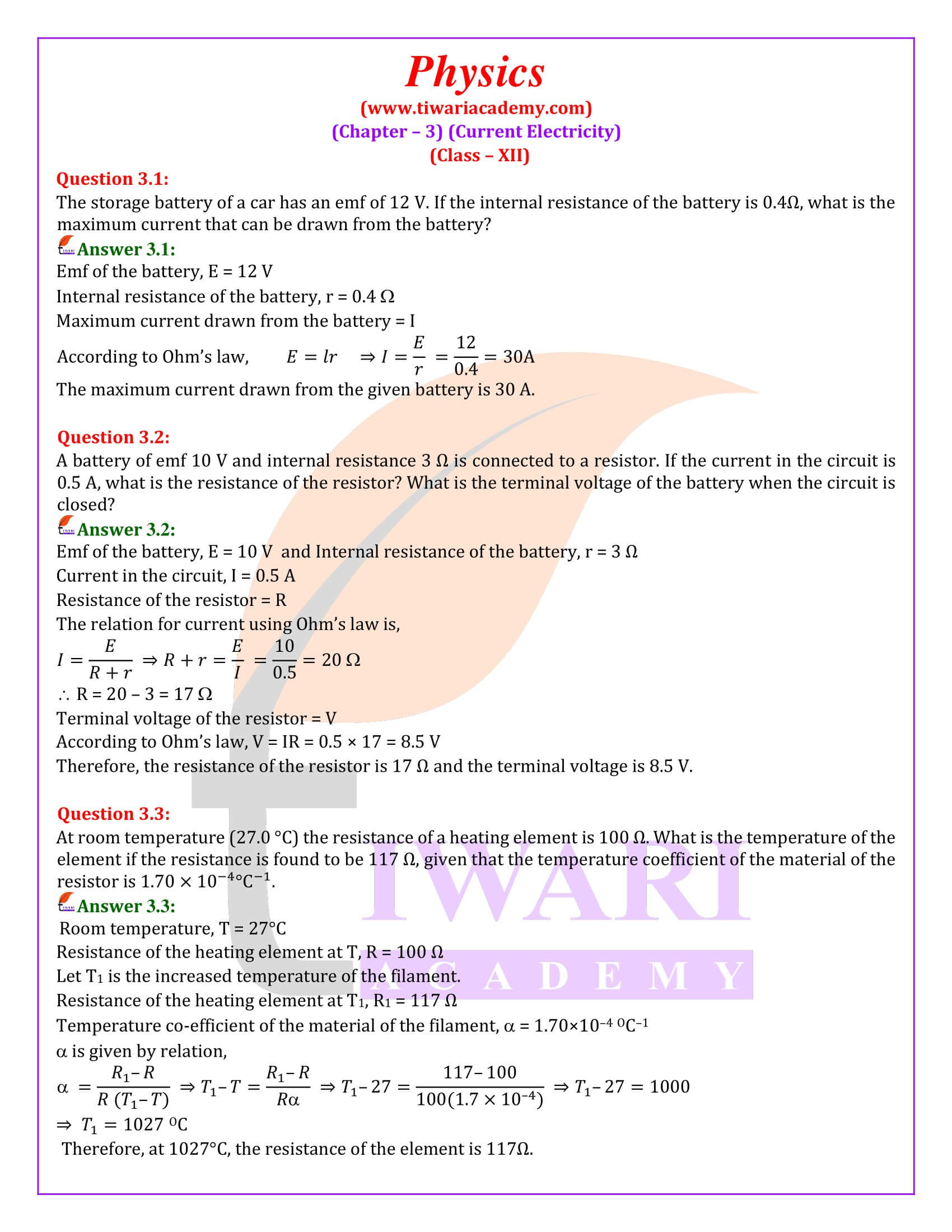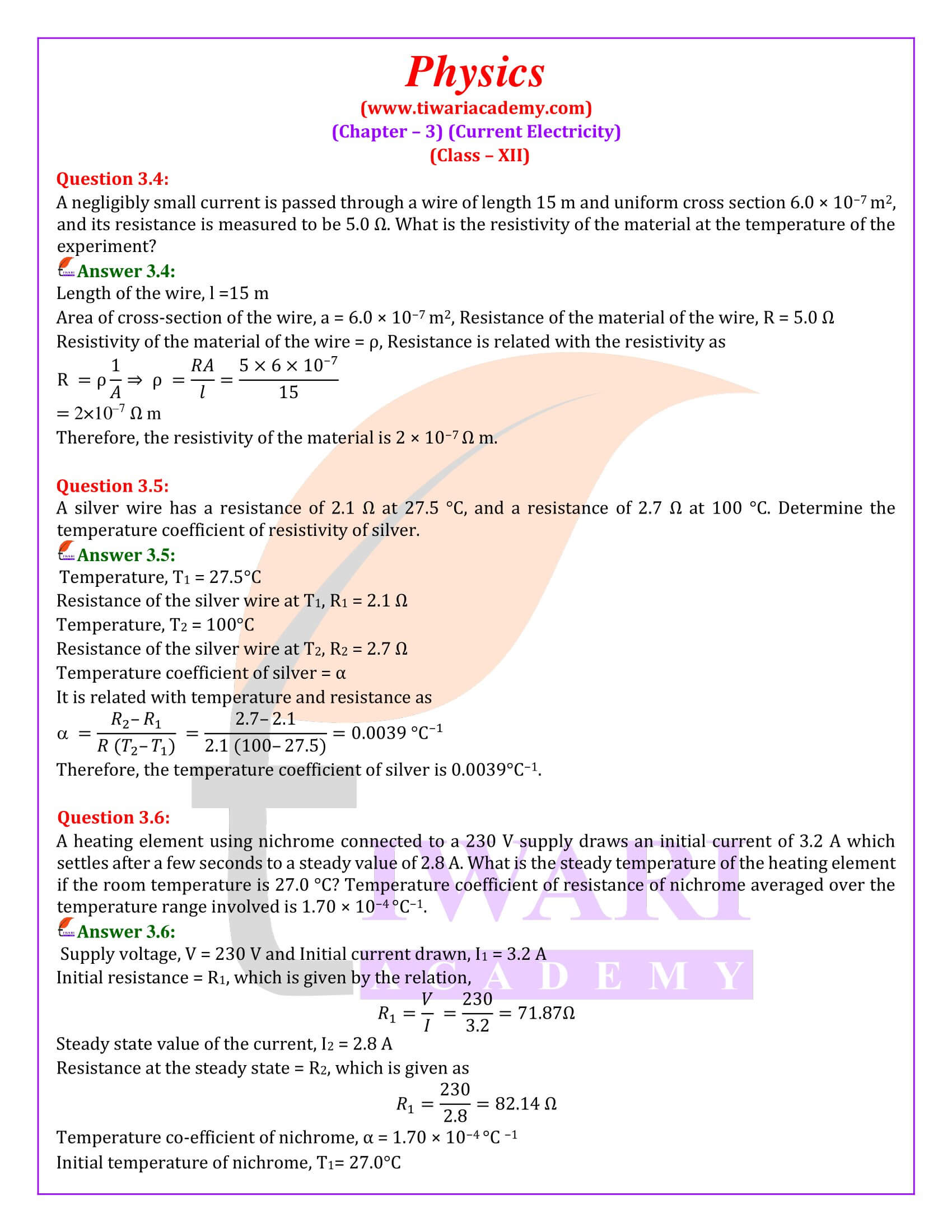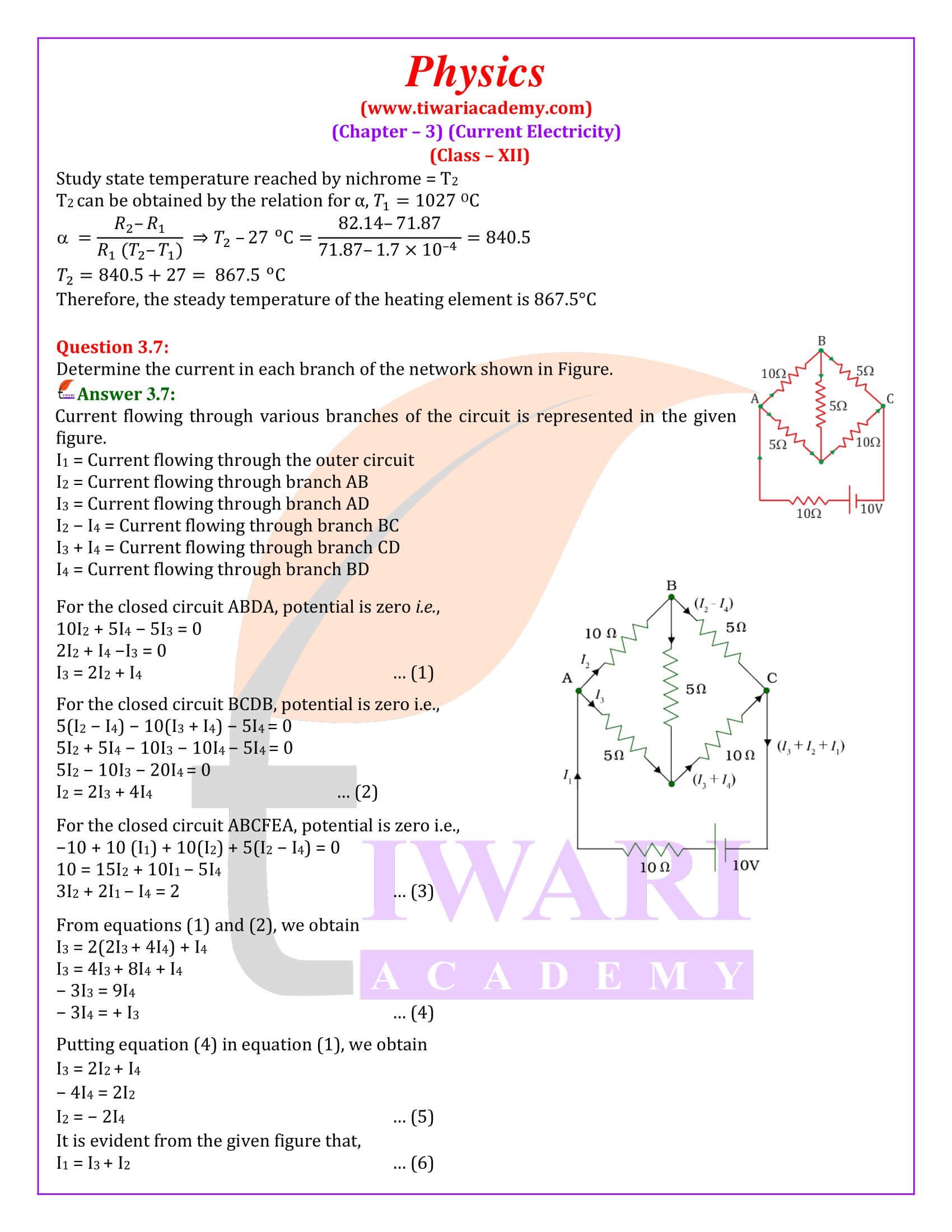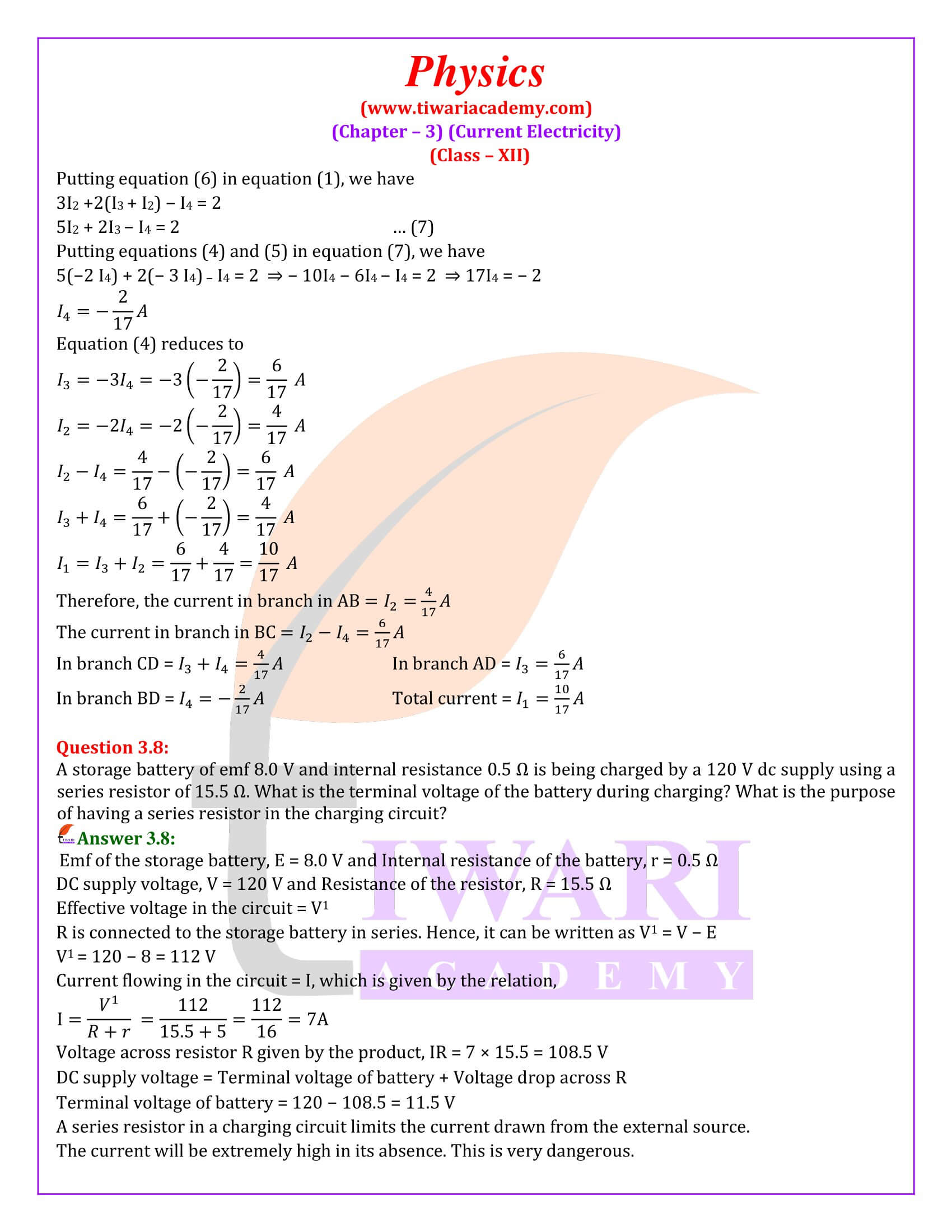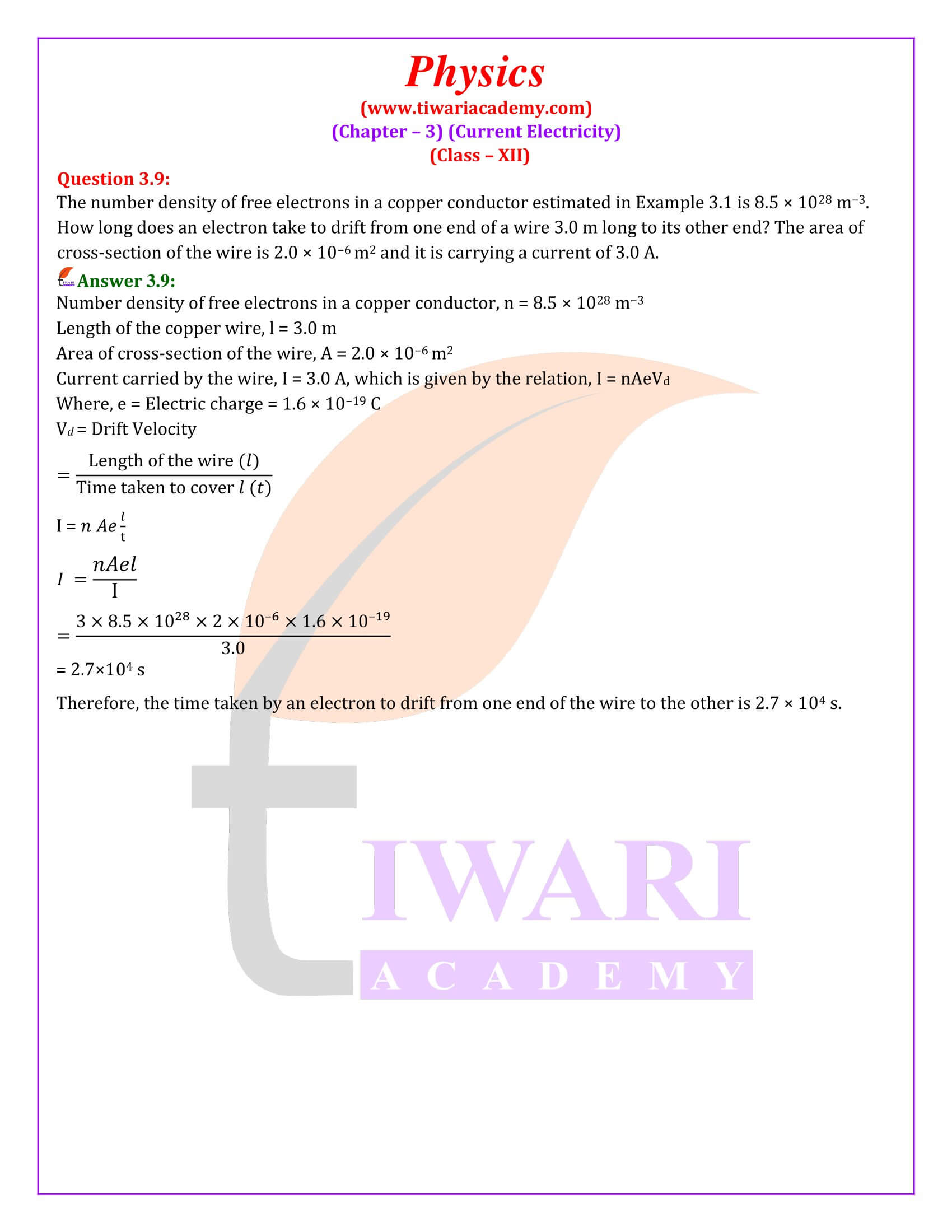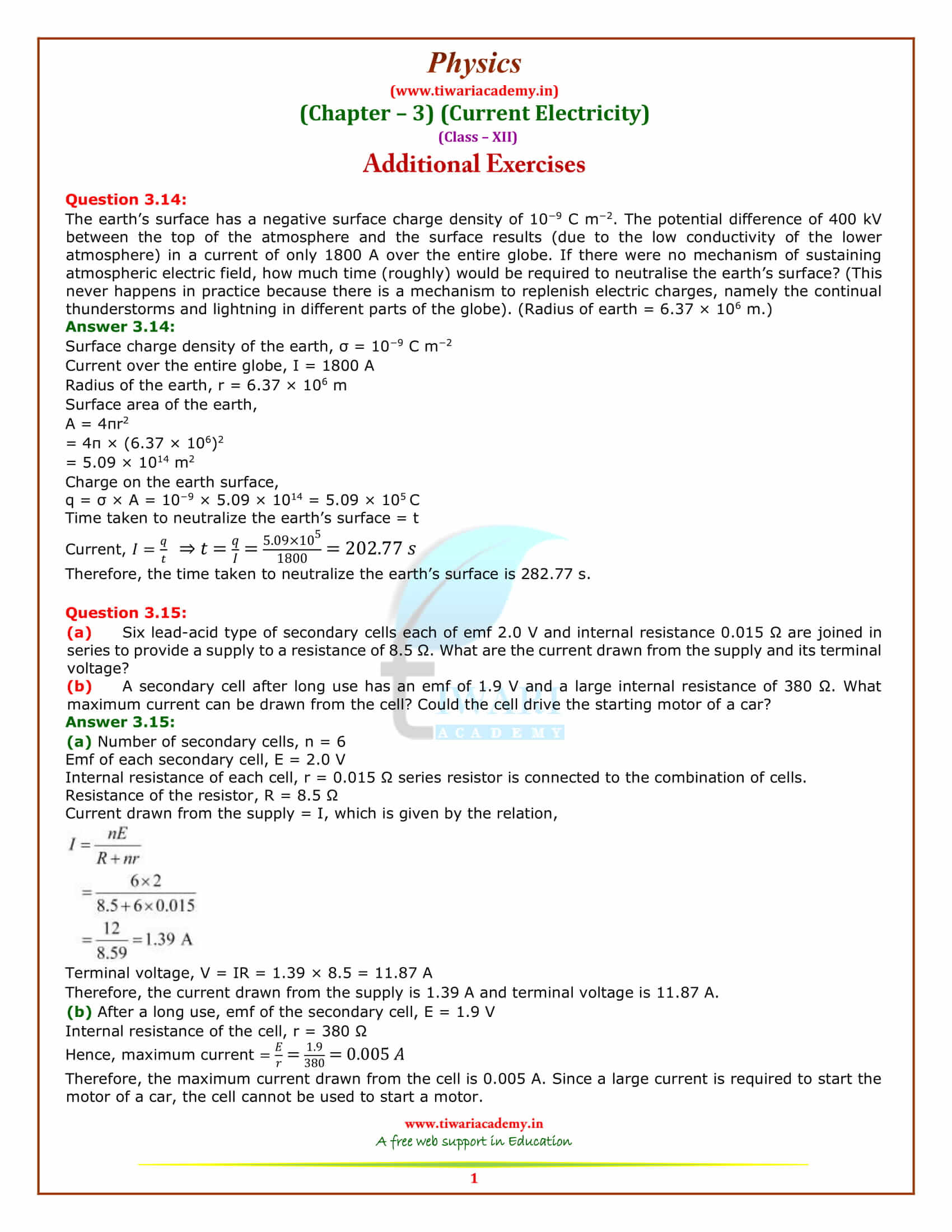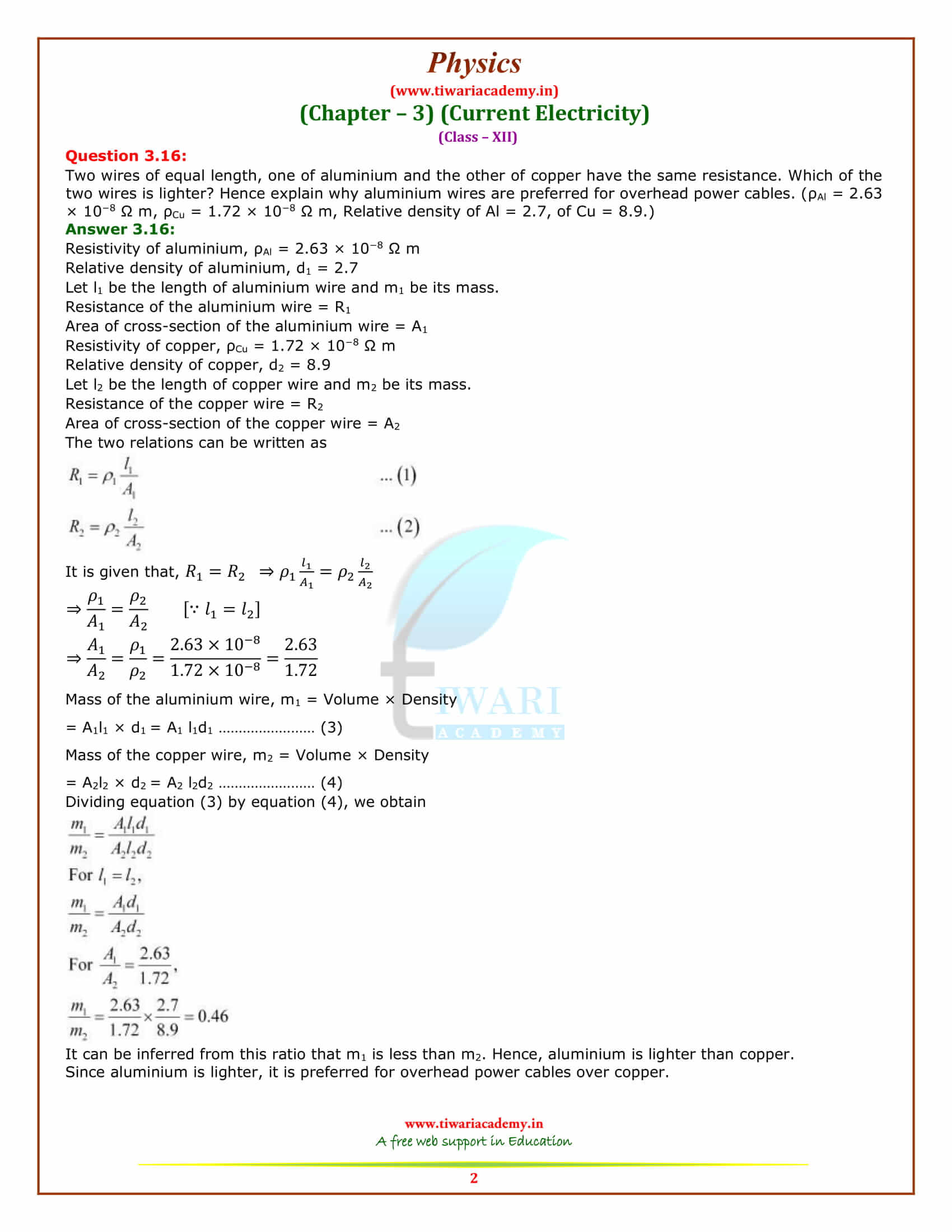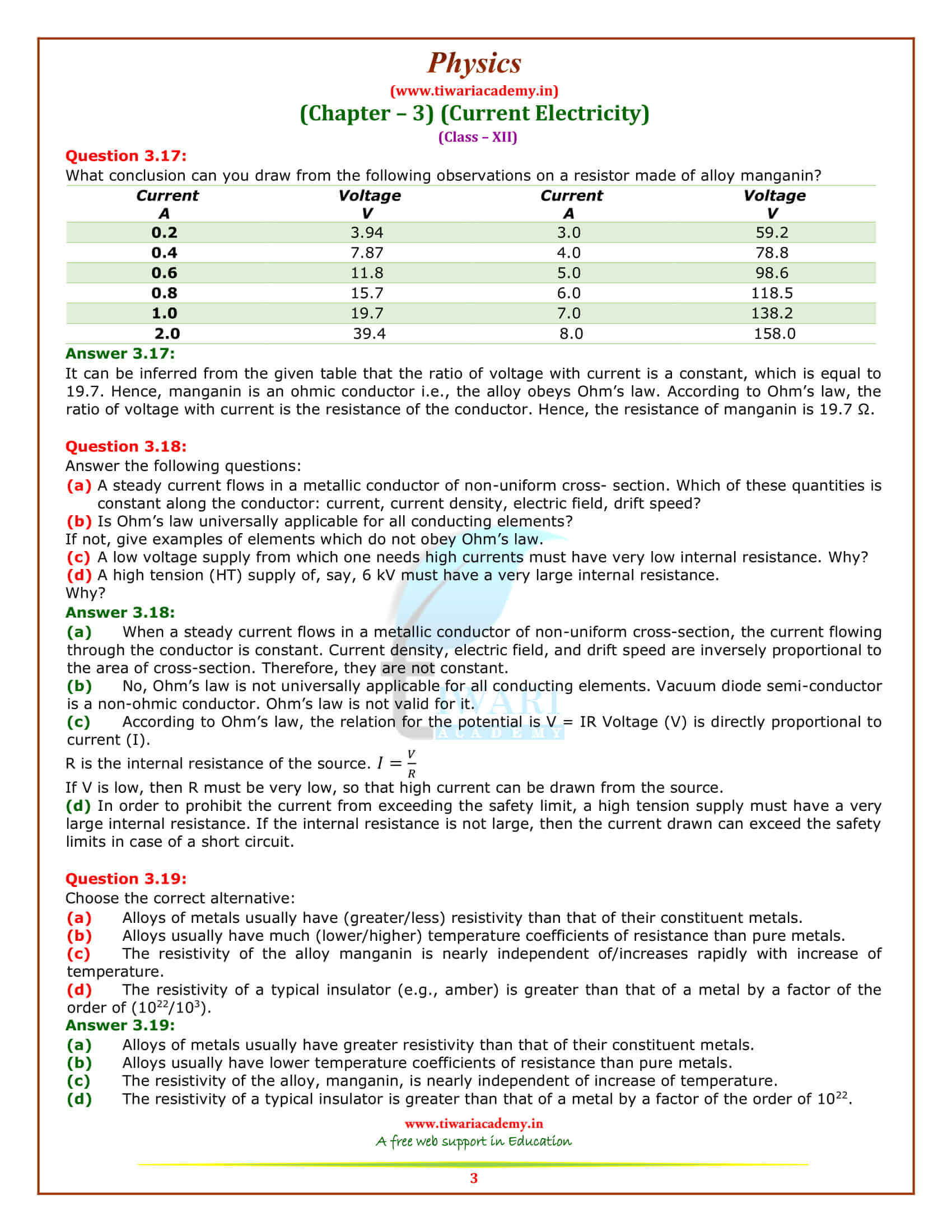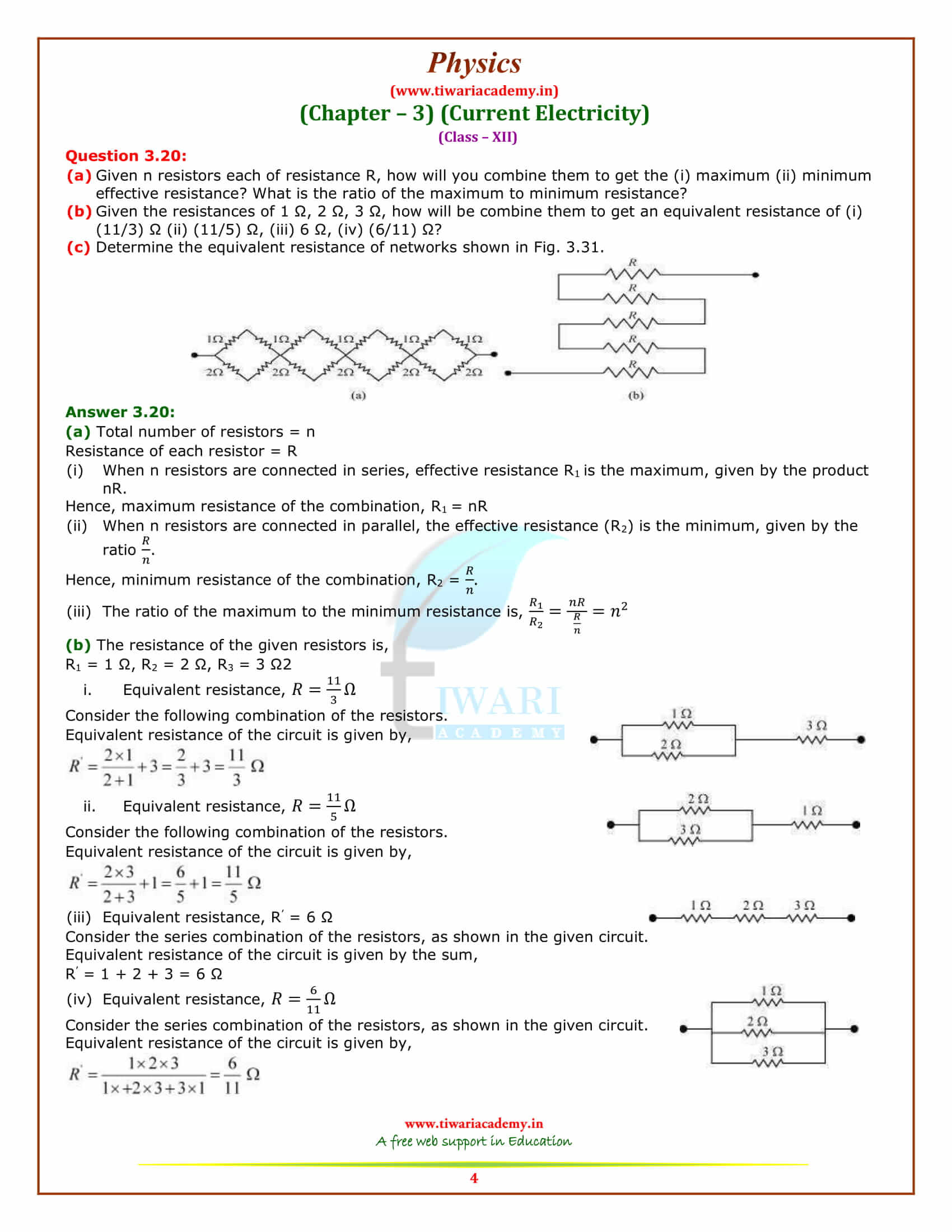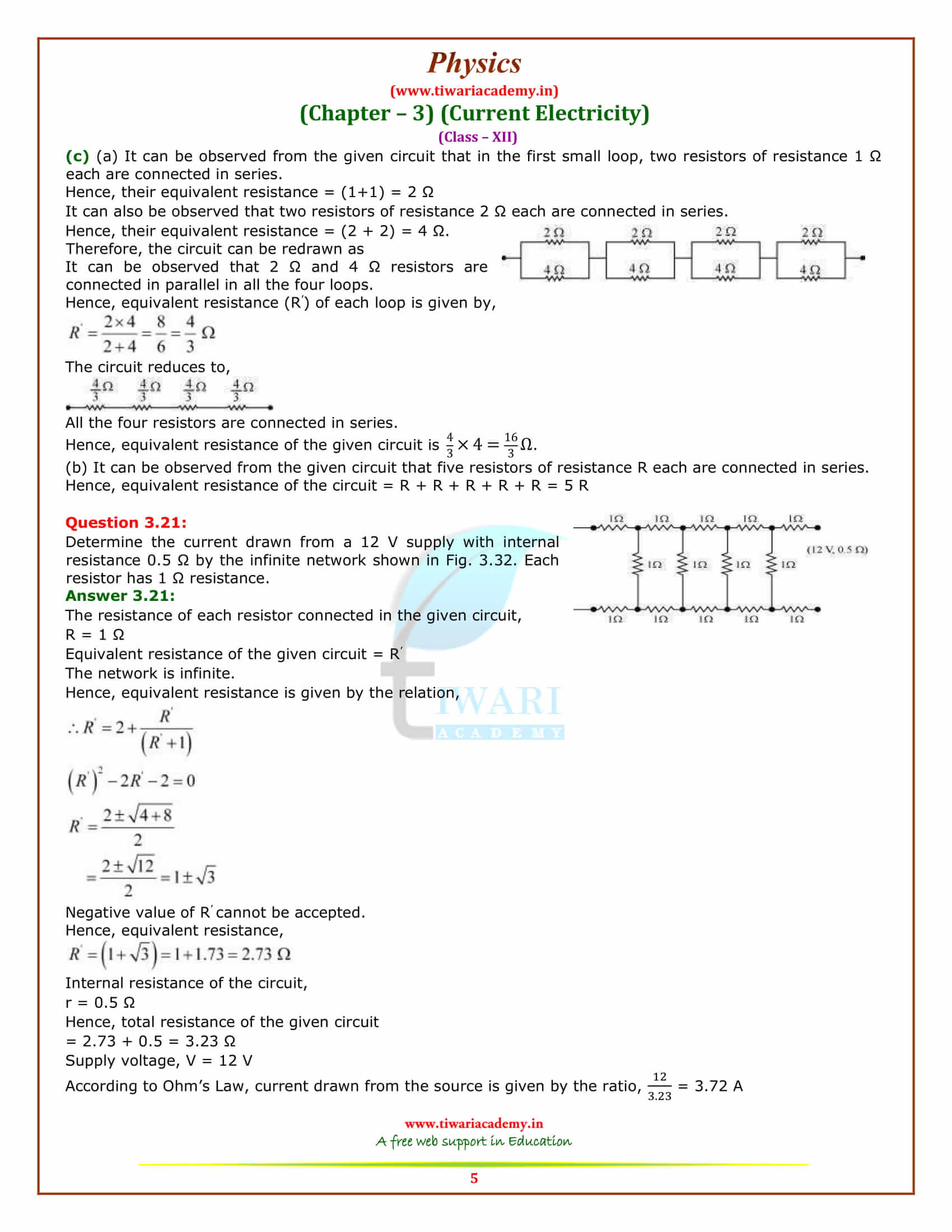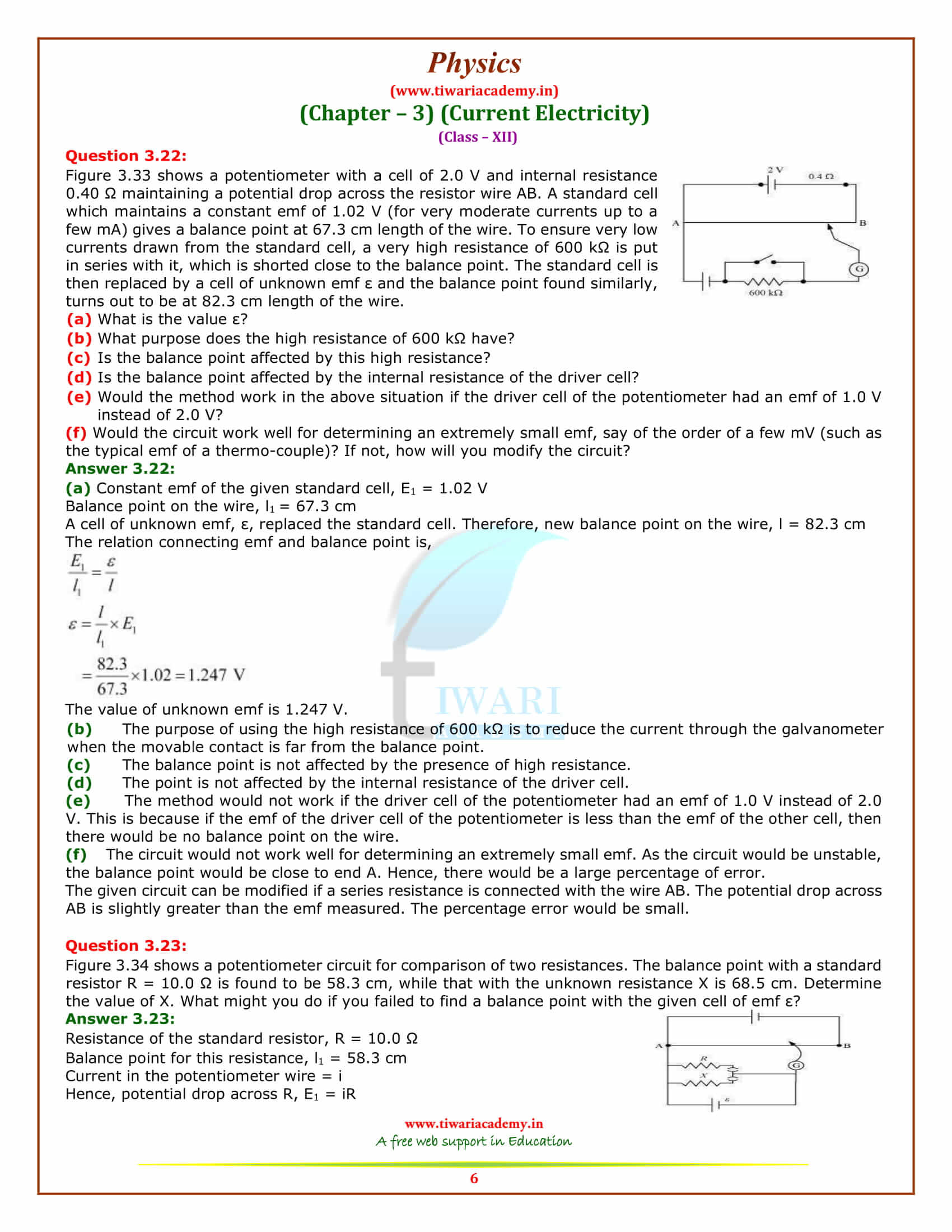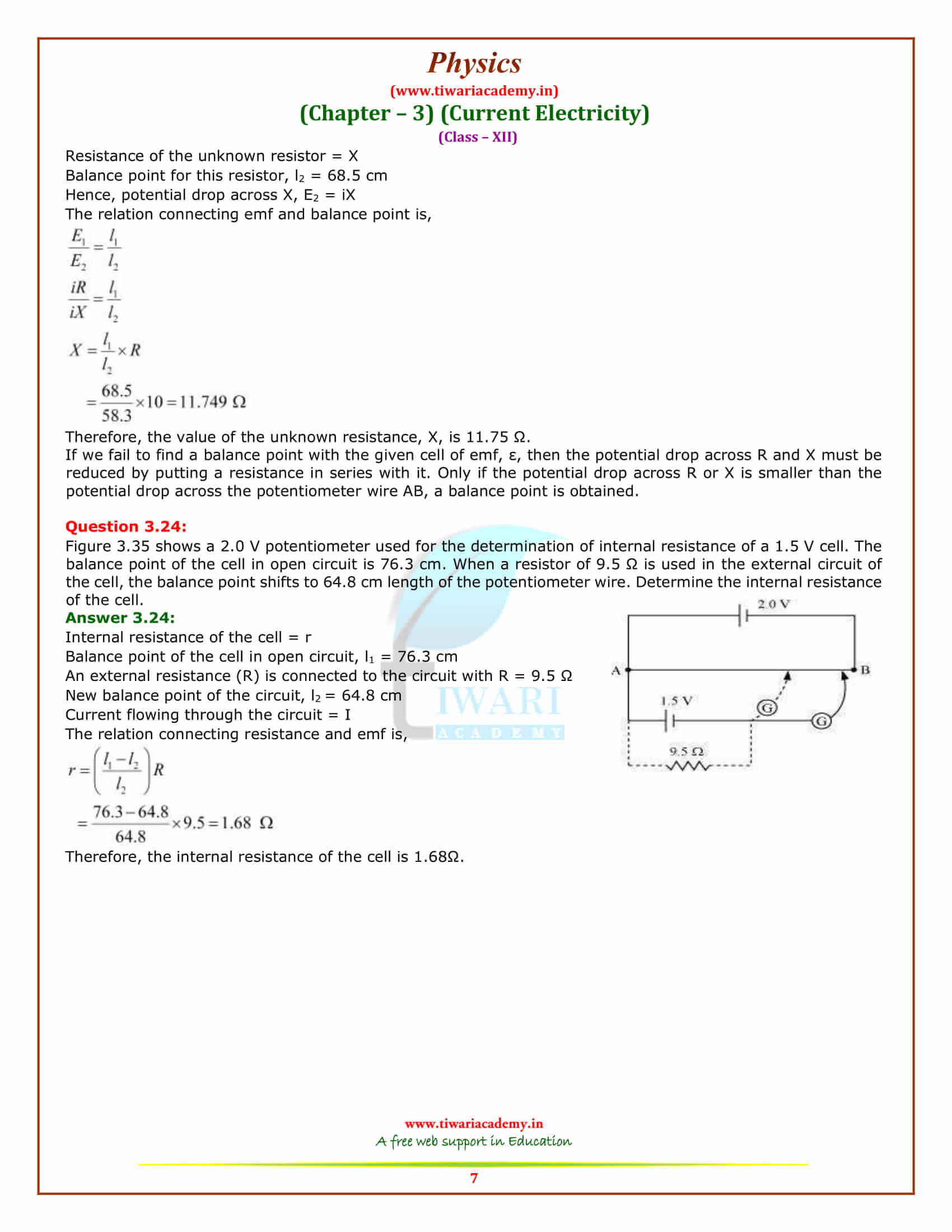NCERT Solutions for Class 12 Physics Chapter 3 Current Electricity Exercises and Additional Exercises in Hindi and English Medium free PDF download for academic session 2024-25. The revised question answers of exercises of chapter 3 class 12th Physics are given here. The additional exercises are removed from curriculum as per rationalised NCERT books for 2024-25 exams.
NCERT Solutions for Class 12 Physics Chapter 3
Chapter 3 Current Electricity Solutions
- Class 12 Physics Chapter 3 Exercises Solutions
- 12th Physics Chapter 3 Additional Exercises (Not in Syllabus)
- Class 12 Physics Chapter 3 Solutions in Hindi
- Class 12 Physics NCERT Book Chapter 3
- Class 12 Physics Revision Book Chapter 3
- Revision Book Answers
- Class 12 Physics Chapter 3 Revision Notes 1
- Class 12 Physics Chapter 3 Revision Notes 2
- Download Class 12 Physics Chapter 3 Quick Revision
- Download Class 12 Physics Chapter 3 Revision Questions
- Visit to 12th Physics Main Page
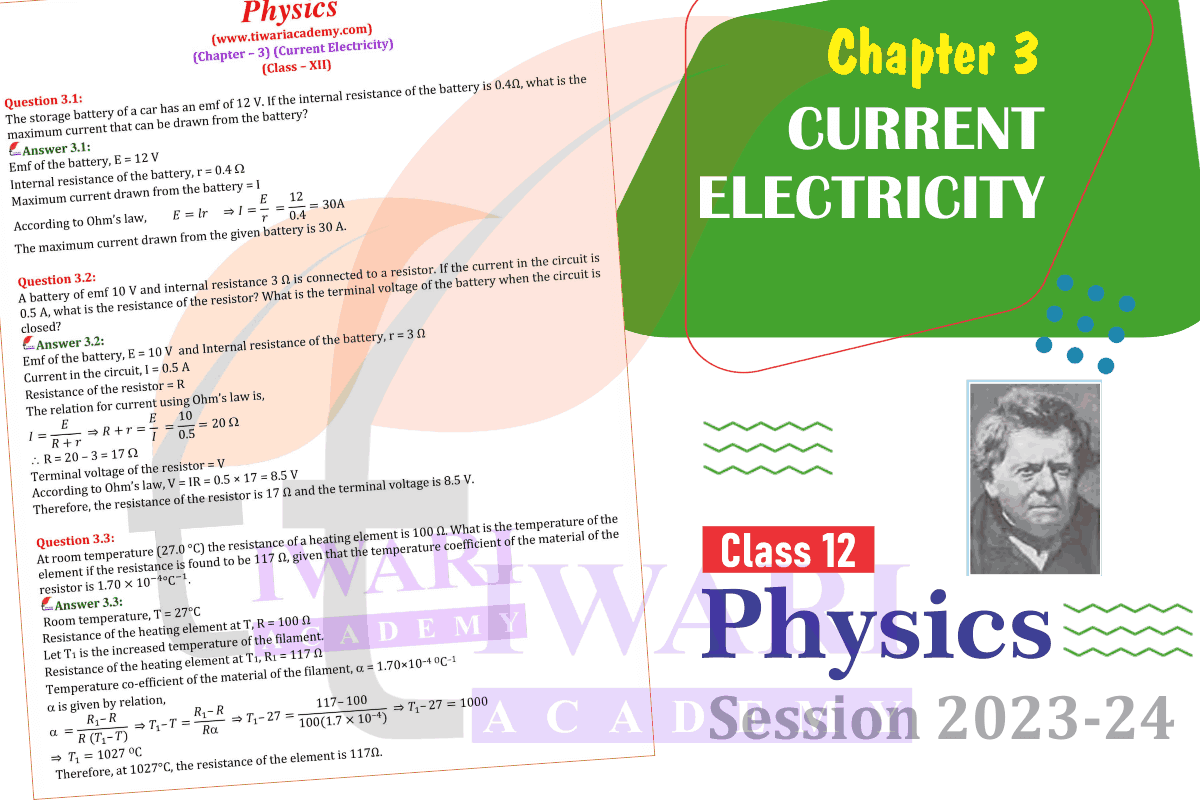
CBSE and UP Board Offline Apps and Solutions are updated on the basis of latest NCERT Books for 2024-25.
| Class: 12 | Physics |
| Chapter 3: | Current Electricity |
| Content: | Exercises Solutions and Extra Questions |
| Content Type: | PDF, Text, Images and Videos |
| Academic Session: | Year 2024-25 |
| Medium Used: | Hindi and English |
Class 12 Physics Chapter 3 Solutions in English
NCERT Solutions for Class 12 Physics Chapter 3 Current Electricity exercises are given below to use it online or download in PDF form free. Discuss your doubts related to CBSE or NIOS boards with us and other users through Discussion Forum and get the proper suggestions. Download NCERT Books 2024-25 for all boards who are following CBSE Syllabus for 2024-25.
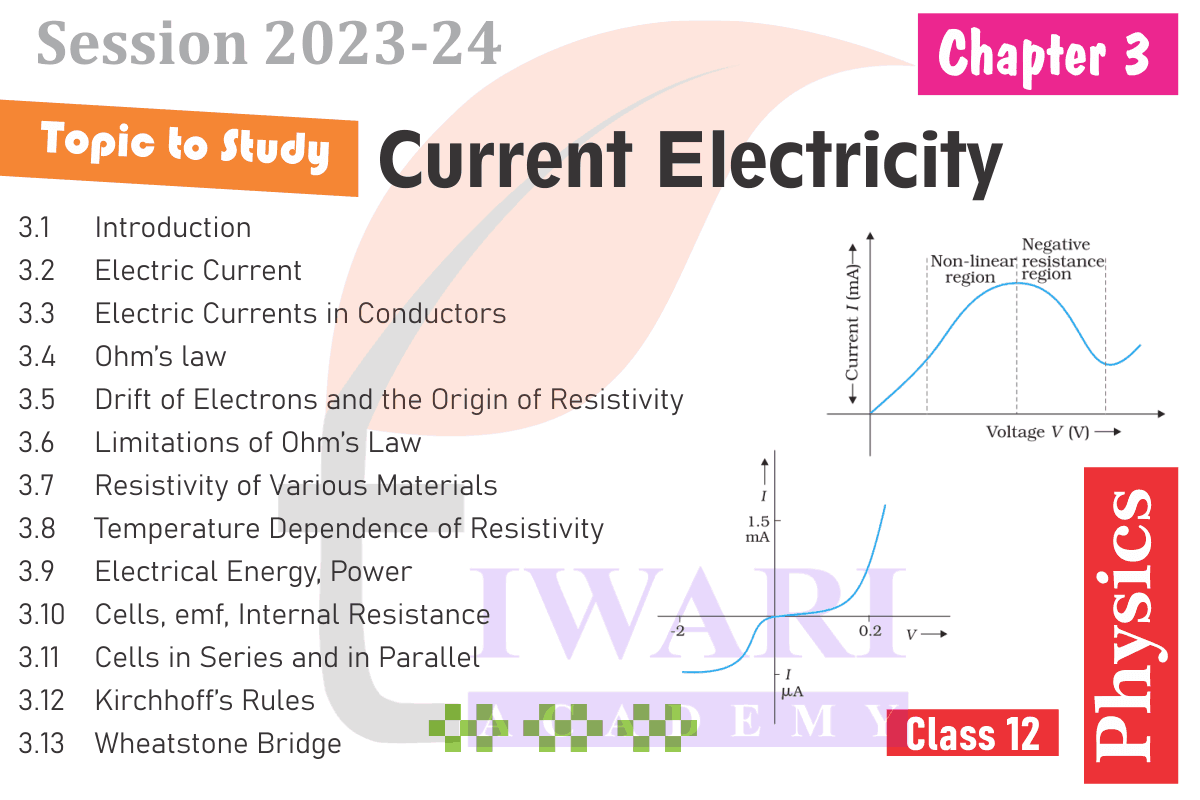
Questions from Board Papers
1. Define specific resistance. Write its SI unit. Derive an expression for resistivity of a wire in terms of its material’s parameters, number density of free electrons and relaxation time.
2. State the principle of potentiometer. Draw a circuit diagram used to compare the emf of two primary cells. Write the formula used.
3. Electron drift speed is estimated to be only a few mm/s for currents in the range of few amperes? How then is current established almost the instant a circuit is closed.
4. Derive an expression for capacitance of parallel plate capacitor with dielectric slab of thickness t(t is less than d) between the plates separated by distance d. How would the following (i) energy (ii) charge, (iii) potential be affected if dielectric slab is introduced with battery disconnected, (b) dielectric slab is introduced after the battery is connected.
5. Using Gauss’s theorem obtain an expression for electric field intensity due to a plane sheet of charge. Hence obtain expression for electric field intensity in a parallel plate capacitor.
Important Questions for practice
1. Define emf and terminal potential difference of a cell. When is the terminal charging potential difference greater than emf? Explain how emf and terminal potential difference can be compared using a potentiometer and hence determine internal resistance of the cell.
2. Deduce the condition for balance in a Wheatstone bridge. Using the principle of Wheatstone bridge, describe the method to determine the specific resistance of a wire in the laboratory. Draw the circuit diagram and write the formula used. Write any two important precautions you would observe while performing the experiment.
3. Two point charges 4e and e each, at a separation r in air, exert force of magnitude F. They are immersed in a medium of dielectric constant 16. What should be the separation between the charges so that the force between them remains unchanged. (1/4 the original separation)
4. A point charge develops an electric field of 40 N/C and a potential difference of 10 J/C at a point. Calculate the magnitude of the charge and the distance from the point charge.
5. A storage battery of emf 12V and internal resistance of 1.5Ω is being charged by a 12V dc supply. How much resistance is to be put in series for charging the battery safely, by maintaining a constant charging current of 6A.
Important Questions on 12th Physics Chapter 3
Three resistors 1 Ω, 2 Ω, and 3 Ω are combined in series. What is the total resistance of the combination?
Three resistors of resistances 1 Ω, 2 Ω, and 3 Ω are combined in series. Total resistance of the combination is given by the algebraic sum of individual resistances. Total resistance = 1 + 2 + 3 = 6 Ω.
What happens if the galvanometer and cell are interchanged at the balance point of the metre bridge? Would the galvanometer show any current?
When the galvanometer and cell are interchanged at the balance point of the bridge, the galvanometer will show no deflection. Hence, no current would flow through the galvanometer.
A steady current flows in a metallic conductor of non-uniform cross- section. Which of these quantities is constant along the conductor: current, current density, electric field, drift speed?
When a steady current flows in a metallic conductor of non-uniform cross-section, the current flowing through the conductor is constant. Current density, electric field, and drift speed are inversely proportional to the area of cross-section. Therefore, they are not constant.
Is Ohm’s law universally applicable for all conducting elements? If not, give examples of elements which do not obey Ohm’s law.
No, Ohm’s law is not universally applicable for all conducting elements. Vacuum diode semi-conductor is a non-ohmic conductor. Ohm’s law is not valid for it.
A low voltage supply from which one needs high currents must have very low internal resistance. Why?
According to Ohm’s law, the relation for the potential is V = IR Voltage (V) is directly proportional to current (I). R is the internal resistance of the source. I=V/R If V is low, then R must be very low, so that high current can be drawn from the source.
A high tension (HT) supply of, say, 6 kV must have a very large internal resistance. Why?
In order to prohibit the current from exceeding the safety limit, a high tension supply must have a very large internal resistance. If the internal resistance is not large, then the current drawn can exceed the safety limits in case of a short circuit.
